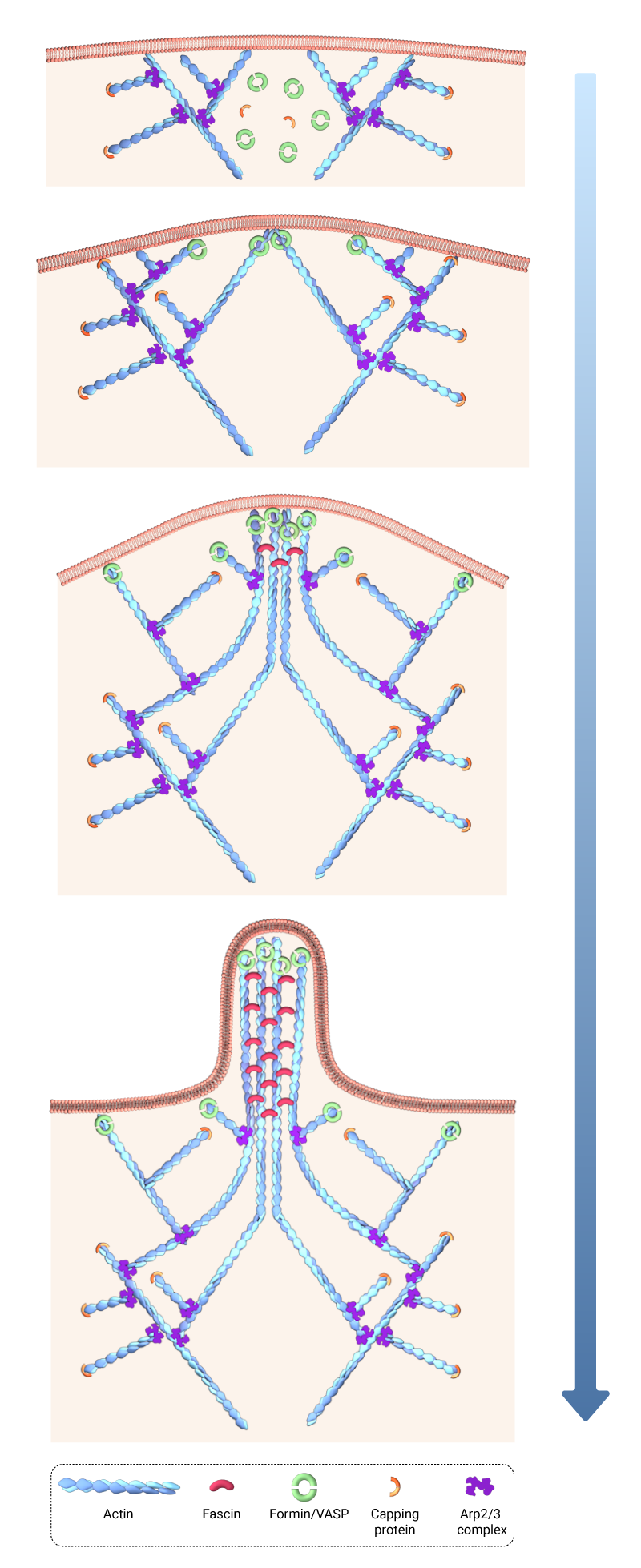What is actin nucleation?
The first step in actin polymerization is known as ‘nucleation’. This step sees the formation of an actin nucleus, which is essentially a complex of three actin monomers, from which an actin filament may elongate. Although non-muscle cells have a high concentration of G-actin-ATP (~100 μM) [1], pure G-actin monomers fail to nucleate new actin filaments efficiently due to the instability of actin oligomers. Additional factors are therefore required and although the exact mechanisms behind filament nucleation remain to be clearly defined, two models, each involving distinct mechanisms and proteins have been proposed. Importantly, these mechanisms are not mutually exclusive and it maybe be the case that nucleation of actin filaments results from a combination of both mechanisms [2].
In the first model, known as the ‘tip nucleation model’, members of the formin family of proteins cluster at the plasma membrane and initiate the nucleation of actin filaments. Formin subsequently mediates filament extension with the structural integrity of the filament bundles maintained by fascin cross-linking [2].

A schematic of the tip nucleation model of actin nucleation
The alternative model is known as the “convergent elongation model”. In this model, the Arp2/3 complex, which is more commonly associated with lamellipodia formation but has been found to be critical for filopodia initiation [3], plays a role. Here, Arp2/3 complex nucleated branches continually develop from the actin filament network located at the leading edge of the lamellipodia. These filaments are proposed to gradually converge, forming a bundle that is secured by facsin cross-linking.

A schematic depicting the convergent elongation model of actin nucleation
References
- Rosenblatt J, Peluso P, and Mitchison TJ. The bulk of unpolymerized actin in Xenopus egg extracts is ATP-bound. Mol. Biol. Cell 1995; 6(2):227-36. [PMID: 7787248]
- Yang C, and Svitkina T. Filopodia initiation: focus on the Arp2/3 complex and formins. Cell Adh Migr 5(5):402-8. [PMID: 21975549]
- Korobova F, and Svitkina T. Arp2/3 complex is important for filopodia formation, growth cone motility, and neuritogenesis in neuronal cells. Mol. Biol. Cell 2008; 19(4):1561-74. [PMID: 18256280]


